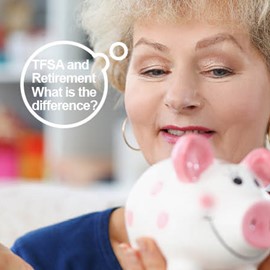
Should you save in a tax-free savings account or in a retirement fund, or both?
![]() Both a tax-free savings account and a retirement fund enable you to save without paying income tax on interest, dividends tax on dividends and capital gains tax on capital gains.
Both a tax-free savings account and a retirement fund enable you to save without paying income tax on interest, dividends tax on dividends and capital gains tax on capital gains.
A key difference that may make saving in a retirement fund more beneficial than using a tax-free savings account is that in addition to tax-free growth, you also enjoy the tax deduction on contributions made to a retirement fund, within certain limits.
Your retirement fund contributions are made with pre-tax money, while your tax-free savings account contributions are made with after-tax money. Some tax applies to your retirement savings when you withdraw at, or after, retirement, which does not apply to a tax-free savings account.
Also remember that there are more restrictions on accessing money in a retirement fund.
You should get advice on what is best for your financial circumstances, but it may make sense to have some money that you can access in a tax-free savings account, while saving the bulk of your retirement savings in a retirement fund where you can benefit from the tax deduction.
Here is a summary of the key differences between the two investment products.
Know your tax-free savings account from your retirement fund
|
|
||
|
|
Tax-free savings account | Retirement fund |
| Contributions allowed | R36 000 a year R500 000 over your lifetime |
No restrictions on the amount you can contribute, only on the amount of your contributions you can claim as a tax deduction |
|---|---|---|
| Tax benefits for savings in the fund | No income tax on interest earned No dividends tax on dividends earned No capital gains tax on capital gains |
No income tax on interest earned No dividends tax on dividends earned No capital gains tax on capital gains |
|
Tax deductions |
None | You can deduct from your taxable income each year contributions made to a fund up to 27.5% of your taxable income or remuneration (which ever is higher). The deduction is limited to R350 000 a year. |
| Tax when you cash in your savings | None | Tax is payable on any withdrawals above R25 000. This tax is at rates of 18%, 27% or 36%. |
|
Tax when you retire
|
None | Tax is payable on any cash lump sum taken above R500 000 (or less if you have withdrawn or retired before). Tax on the balance of any cash lump sum taken is at rates of 18%, 27% or 36%. Any pension paid to you is taxed at your marginal tax rate. |
| Investment rules |
You cannot invest in derivatives, structured products, smoothed bonus portfolios, share portfolios, products with loyalty bonuses, more than 20% unlisted shares. |
Your investments must comply with the investment guidelines in Regulation 28 of the Pension Funds Act. Principally this means you may not invest more than 75% in shares and no more than 45% offshore. |
|
Access to your money
|
You can withdraw at any time and you must be paid within seven days. |
You can only withdraw from an employer-sponsored retirement fund if you resign, are retrenched or retire. You can only withdraw from a retirement annuity after age 55, with some limited exceptions. |
|
Source: www.smartaboutmoney.co.za |
||
